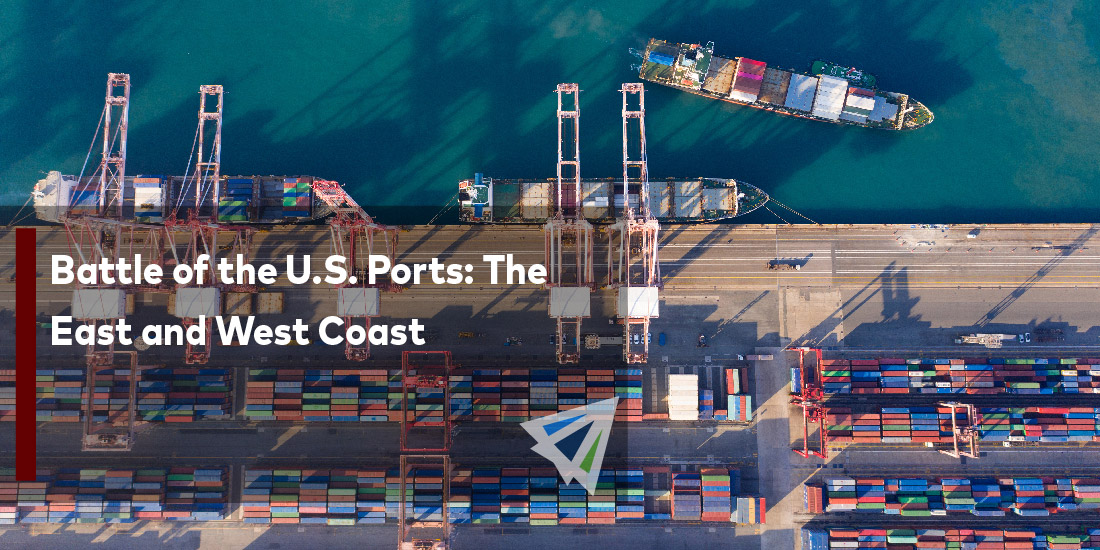Battle of the U.S. Ports: The East and West Coast
Volume and congestion have been shifting between the U.S. East and West Coast ports. Right now, reports and data has been showing that things out on the West Coast are improving a bit, while the East Coast is experiencing their fair share of challenges.
We take a bit of a dive into what kinds of volumes and challenges ports at each U.S. Coasts are facing.
Challenges and Opportunities out East
Throughout the last couple of months, East Coast ports started to take on more volume due to fears of the USWC longshore labor union contract talks. Now, transit time are increasing, and more vessels are anchored offshore out on the East Coast ports. Which has now, shifted the increase in backlogs and congestion from the USWC to the USEC.
The Port of New York/New Jersey and the Port of Savannah has specifically seen significant congestion. The queue at the Port of NY/NJ has reached around twenty vessels. While, the Port of Savannah has around forty container ships waiting, data from the Wall Street Journal reports.
Recently drayage carriers at the Port of NY/NJ commented that they don’t think truck gates offer much advantage, because of the continuing issues of returning empty containers and chassis shortages. The NY-NJ marine terminals has pretty much been offering Saturday gates throughout the last two years. But according to the Journal of Commerce, Saturday gates have only allocated for about five percent of total truck transactions.
High Cargo Volumes out West, but Rail Congestion Still Remains
The Port of Los Angeles is the largest container port in the United States and with that comes its own set of unique challenges. On top of those, it’s been a very unpredictable year with congestion and high cargo volume.
Some highlights, courtesy of CNBC include:
- Queue of vessels waiting to unload goods at the Port of Los Angeles have decreased eighty percent since the beginning of the year
- Backlog of vessels waiting outside of the Port of LA also dropped to twenty vessels waiting outside the port
- Overall volume for July this year hit 935,345 twenty-foot equivalent units (TEUs), its fifth monthly cargo record in seven months
Seroka also credits the use of the port’s state-of-the-art information technology as one of the reasons the port saw volume hitting all-time highs at the port. The technology they use at the port offers real-time and historical truck turn times for all of the container terminals (twelve) at the port complex, the Journal of Commerce reports.
However, rail congestion remains a challenge at the ports, which is contributing to the number of long-dwelling containers at the port. More than 33,700 shipping containers that are delegated for rail are sitting at docks on the Port of LA – Supply Chain Dive mentions that this number should be closer to 9,000.
“We’re working with cargo owners on the input side of the business, large and small,” Seroka noted, “because while some may not need their cargo right now – they’ve possibly ordered just-in-case, just-in-time – there are other small-to-medium-sized companies that need their boxes every single day, and we can’t get them intertwined with the cargo that’s at rest,” Seroka continued to say.
Looking Ahead
Both East and West Coast ports are seeing their fair share of challenges and success. It will be interesting to see how the remainder of the year goes for all of the ports in the U.S.
As always, if you would like more information regarding this topic, contact our team at InterlogUSA and we will be happy to assist you on any questions or comments you may have! In addition, we have our weekly market updates that can provide you with relevant freight news, updates, developments across the industry, and more.
